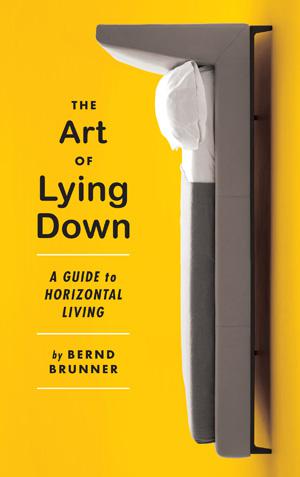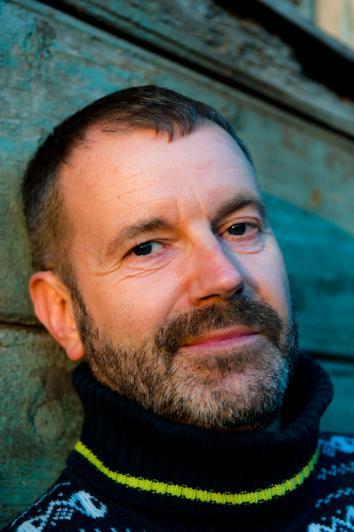The first thing everyone tells you when you start to work from home is that you have to pretend you still have a normal office job. “Shower first thing in the morning,” they say. “Put on makeup, change out of your pajamas, and sit at a desk.” Over and over, fellow work-from-homers tell me about how they “just can’t get motivated” unless they’re wearing a crisp button-down shirt and sitting up ramrod straight. A Vogue contributing editor recently included a pair of $795 mules on her list of home-office must-haves.
Are these people lying, or are they crazy? I’m writing this book review slumped down in bed at 10 a.m. on a Wednesday, and I’m loving it. I often spend entire mornings this way, especially during winter, and my productivity is just fine. In fact, because I don’t tie up my best thinking hours primping and getting resettled, I’d venture to say that I actually work more efficiently lying down. Working from home is a spectacular privilege, so why waste it on fashion and good posture? Just because one slouches doesn’t make one a slouch.
All of this puts me in a receptive frame of mind to read The Art of Lying Down, an idiosyncratic new examination of the one-third of life—or more!—we spend recumbent. Lying down, German author Bernd Brunner writes, “spans the human condition, from complete passivity to the most passionate of activities.” (The book was translated by Lori Lantz.) It’s the position in which “we sleep and dream, make love, contemplate, give ourselves over to wistful moods, daydream, and suffer.” Almost every day begins and ends in a bed, and so does almost every human life.
If Brunner has a big idea, it’s that lying down is due for a revival in the Western world, a culture too long obsessed with achievement and motion and noise and, therefore, uprightness. That makes rest a kind of rebellion. The book begins with reassurance: “If you’re lying down right now, there’s no need to defend yourself.” After all, life on the X axis is natural, enjoyable, and healthful. It’s good for the soul, the mind, and the body. By the end, Brunner is optimistically declaring that “the age of the New Horizontal has arrived.”

Courtesy of Melville House
Well, perhaps. I’m not sure there’s much evidence for this, but Brunner at least takes an extremely enjoyable path to get there. Over the course of 31 brief chapters, he meanders from topic to topic, as minds do when daydreaming. In one chapter, he muses on the scandalous reputation of the chaise longue at the turn of the last century. In the next he’s describing the infamous 1998 Tracey Emin installation “My Bed,” strewn with cigarettes and condoms. In a quick 167 pages, he covers hypnosis, gravity, drugs, bedbugs, the psychology of various sleep positions, feng shui, Egyptian mummies, the effect of climate on sleep, and La-Z-Boy recliners. If that sounds exhausting, it’s not, but why not go ahead and take a nap anyway?
Brunner, who has written similarly peripatetic books on bears and Christmas trees, doesn’t belabor any of these topics or even spend more than a few paragraphs mulling most of them over. There’s no real sustained argument here, and many chapters sort of drift off at the end. That’s one of this slight book’s charms, and another nice echo of the way the lying-down brain works: Grand emotional or intellectual breakthroughs often arrive on the brink of sleep, but that’s no time to be writing a thesis. Think big thoughts, sure, but do it briefly, hazily. You can do the heavy lifting in the morning.
Naturally, sleep is one of the book’s major themes. Brunner digs up a 1953 pamphlet called “Sleep Before Midnight,” written by a German school principal named Theodor Stöckmann. Stöckmann promoted his discovery of “the law of natural time,” which requires going to bed at sunset and rising naturally no later than sunrise. “By consciously and willingly submitting to the cosmic dictates of the sun’s orbit,” Stöckmann concluded, “we must become people of the sun, children of the light.” He wasn’t so far off: Contemporary sleep research indicates that artificial light, particularly the “blue light” of iPads and energy-efficient light bulbs, is terrible for sleep.
For an activity whose very essence is rest, sleep is a persistent cause of human anxiety. There’s insomnia, nightmares, and stiff necks. And then there’s the judgment from scolds who don’t want anyone to enjoy it. British preacher and theologian John Wesley took the typical sourpuss approach in 1782 in an entire sermon against sleeping late: “A still greater objection to the not rising early, the not redeeming all the time we can from sleep, is, it hurts the soul, as well as the body,” he wrote. “It is a sin against God.”

Courtesy of Ahmet Necati Uzer
Wesley, the founder of Methodism, got up at 4 a.m. every day. There’s something deeply un-Protestant about getting plenty of sleep. Maybe that’s why so many American success stories feature bragging about how little sleep each high-achiever requires. President Obama, Marissa Mayer, and Martha Stewart, among many others, are all said to get by on no more than six hours a night, and some of them much less. Thomas Edison, the inventor of the light bulb that now disturbs our circadian rhythms, grabbed just three or four hours a night and dismissed sleep as “a heritage from our cave days.” (I’ve already admitted to working from bed, so what the hell: Most nights, I get about eight hours.)
All sleep is not equal. Brunner warns against the romantic temptation to sleep outdoors: “Caution is especially called for in forests,” he writes, ticking off problems like strange sounds, “upsetting scents,” nosy animals, and damp ground. “Nothing about it encourages a good night’s sleep.” There is a reason God invented mattresses. And yes, Brunner gets to those, too. In a chapter on their history, he traces the development of the coil spring, the box spring, and the water bed, conceived in the early 19th century by a Scottish doctor who placed a slab of rubber on a basin of water and called it a “hydrostatic bed for invalids.”
Lying down is not only about sleeping, of course. It’s also about sex, which Brunner doesn’t spend much time on, and contemplation, which he does. And why don’t we do as the Greeks and Romans did and eat lying down? Despite the mini-revival of lounges and nightclubs that encourage reclining while socializing, Brunner reluctantly concedes that “tables and chairs have existed for thousands of years, and their anonymous inventors developed them for a reason.”
Then, of course, there’s work. “People who work while lying down often don’t like to admit it,” he writes, correctly. But plenty of us do manage to get work done there. Proust finished In Search of Lost Time in bed. Mark Twain, Edith Sitwell, and William Wordsworth were all in the habit of writing from bed, and Henri Matisse sometimes painted there using brushes attached to long sticks. Truman Capote referred to himself once as a “completely horizontal author,” and said, “I can’t think unless I’m lying down.” Edith Wharton, Brunner writes, “retreated to bed to escape rigid expectations about what women should wear,” raising the appealing possibility of lounging around as a feminist statement. Is it too late for me to claim that?
Despite Brunner’s belief that we’re entering a new age of recline, there’s all too much evidence that in fact, we’re only speeding up. Within the last year, dozens have articles have frantically reported that “sitting is killing you.” That led to the abhorrent “standing desk,” and lately it seems that even standing up all day isn’t good enough. Now we’re supposed to embrace the treadmill desk, which apparently boosts productivity while it burns calories.
It’s all so exhausting. And isn’t life exhausting enough? Before you talk yourself into the Ultra-Marathon Desk, take a deep breath. Pick up this book. Read it in bed.
—
The Art of Lying Down: A Guide to Horizontal Living by Bernd Brunner. Melville House.
See all the pieces in this month’s Slate Book Review.
Sign up for the Slate Book Review monthly newsletter.
